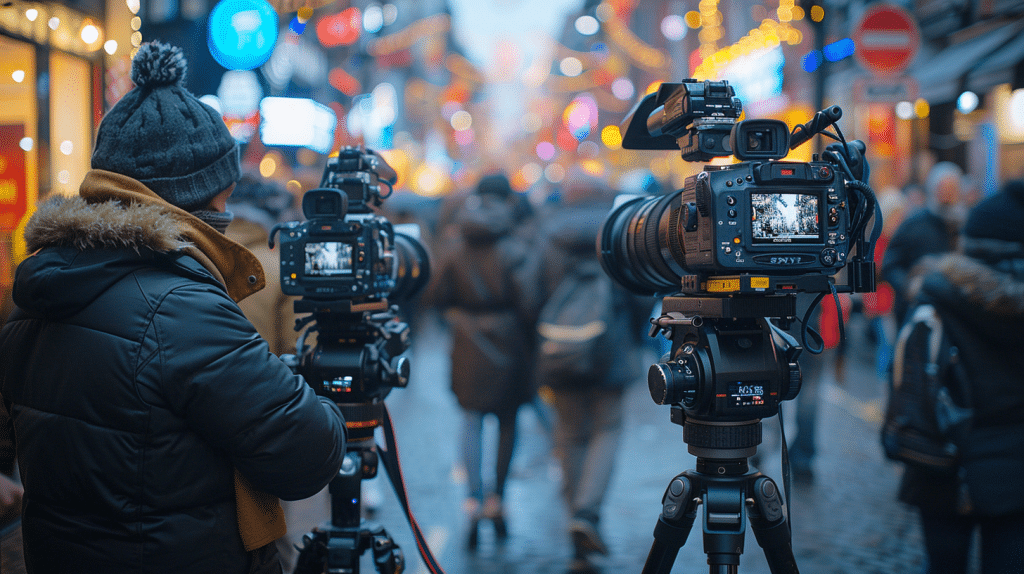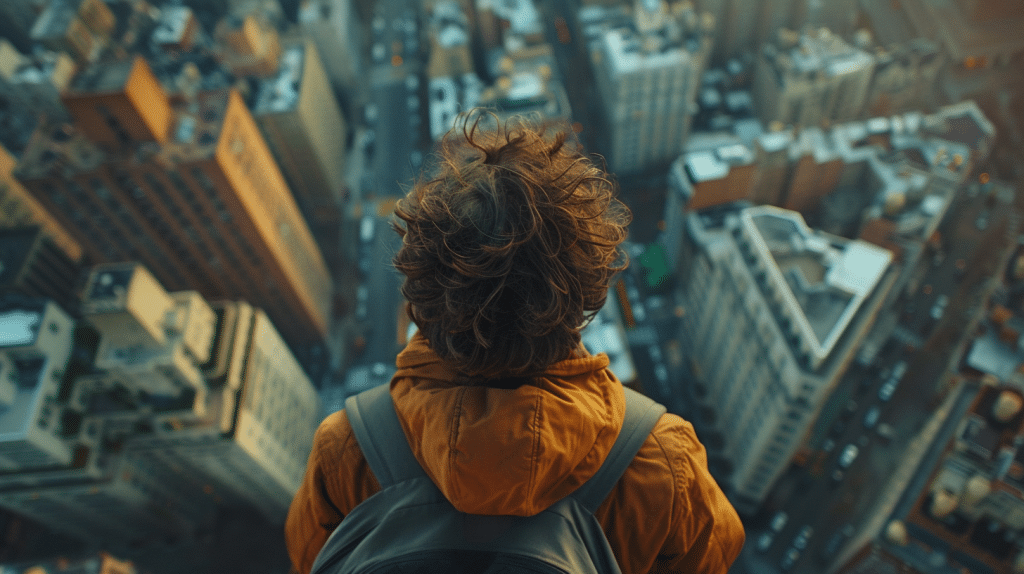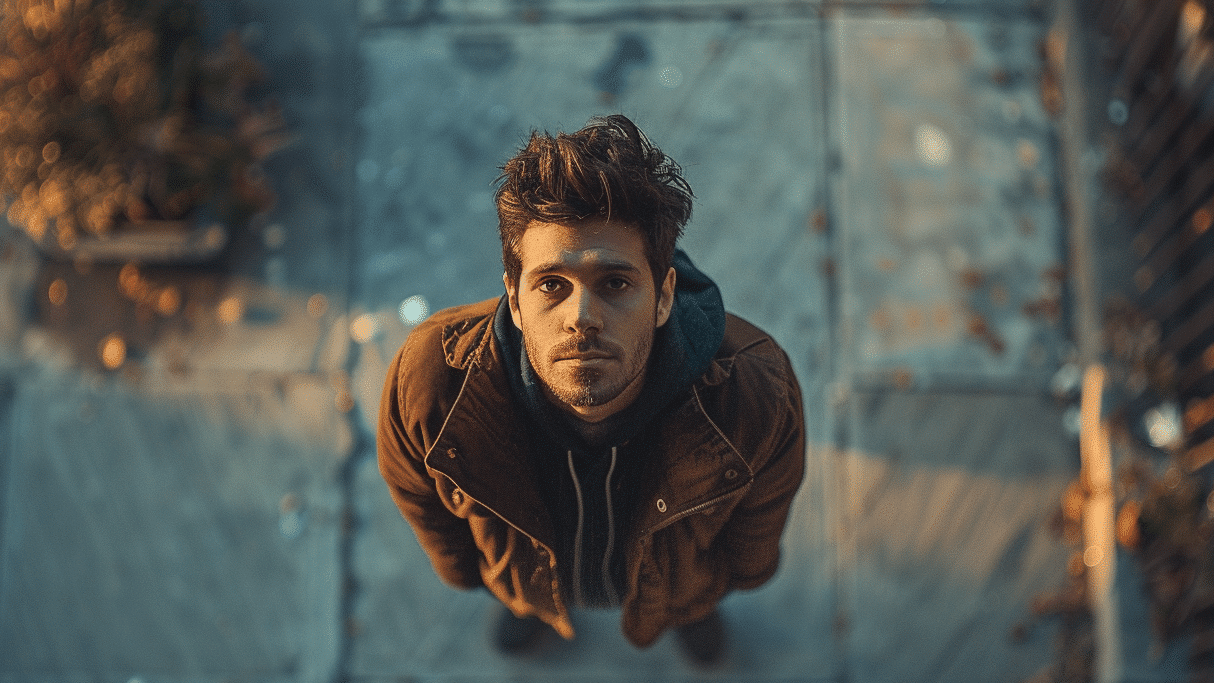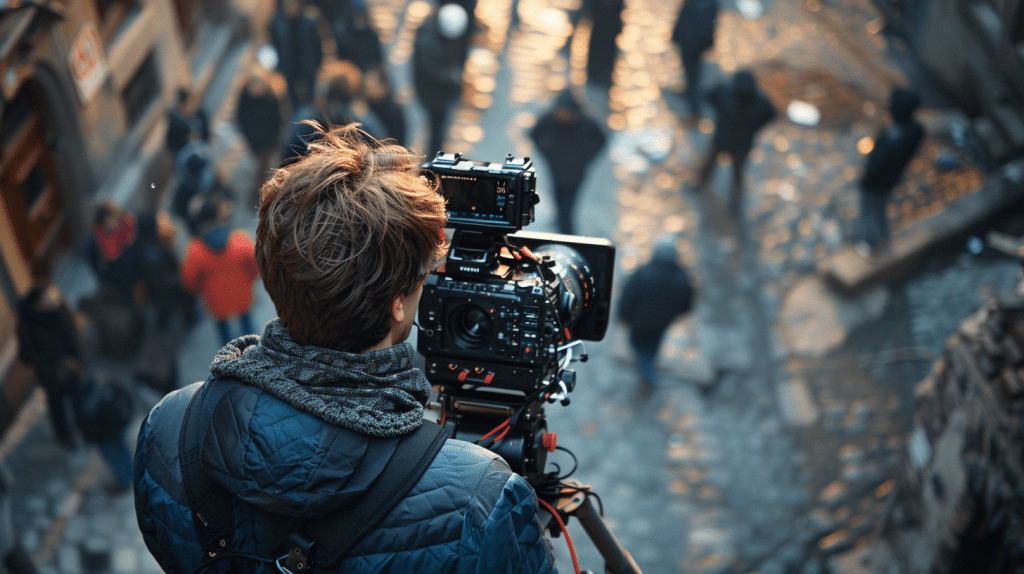Elevate Visual Storytelling: Discover the Power of Two Cameras

When it comes to creating visually engaging videos, did you know that using two cameras can greatly enhance the final product?
The utilization of dual cameras opens up a world of possibilities in terms of shot composition and storytelling.
By seamlessly blending different angles and perspectives, the resulting video can offer a truly immersive experience for the audience.
Curious to discover how this dynamic approach can elevate your video content to new heights and set it apart from the rest?
Table of Contents
Benefits of Using Two Cameras
Enhance your video production by leveraging the advantages of using two cameras simultaneously. Dual camera versatility opens up a world of creative shot combinations, allowing you to capture your subject from multiple angles seamlessly.
One of the key benefits of using two cameras is the ability to achieve dynamic shots that would be challenging with just one camera. By strategically positioning each camera, you can create visually engaging scenes that enhance the overall quality of your video.
When utilizing two cameras, you have the flexibility to switch between different perspectives effortlessly. This versatility enables you to capture wide establishing shots along with close-ups simultaneously, providing a more immersive viewing experience for your audience.
Moreover, the creative shot combinations achievable with two cameras allow you to experiment with unique framing and composition, adding depth and visual interest to your video content.
Enhancing Visual Storytelling
To elevate your video production to a new level of visual storytelling, consider the impactful narrative possibilities that arise from utilizing two cameras simultaneously.
By employing two cameras, you open the door to a world of creative composition and artistic framing that can truly captivate your audience.
Creative composition plays an essential role in enhancing visual storytelling.
With two cameras, you have the opportunity to experiment with different angles, perspectives, and focal points, allowing you to create visually striking scenes that convey your story in a unique and engaging way. Whether you choose to juxtapose two different shots to create a sense of contrast or synchronize them to create a seamless shift, the possibilities for creative composition are endless.
Furthermore, artistic framing is another key element in visual storytelling that can be greatly enhanced by using two cameras. By strategically framing your shots with two cameras, you can add depth and dimension to your footage, guiding the viewer’s eye and creating a more immersive viewing experience.
Experimenting with framing techniques such as leading lines, symmetry, and framing within a frame can help you create visually compelling narratives that leave a lasting impact on your audience.
Creating Depth and Dimension

Imagine capturing a scene with layers that draw your viewers in, making them feel like they’re part of the action.
By utilizing two cameras strategically, you can achieve a sense of depth that adds richness and realism to your videos.
Experimenting with various visual dimension techniques and dynamic camera perspectives will further enhance the immersive experience for your audience.
Depth With Dual Angles
Creating depth and dimension in your videos can be achieved by utilizing dual angles from two cameras.
This technique adds a new layer of creativity and depth to your storytelling.
Here are four ways to enhance your videos through depth with dual angles:
- Foreground Focus: Use one camera to focus on the foreground elements while the other captures the background, creating a visually engaging composition.
- Dynamic Perspectives: Experiment with different angles to show the same scene from multiple viewpoints, providing a multidimensional storytelling experience.
- Parallax Effect: By moving one camera slightly, you can create a subtle parallax effect that adds depth and movement to your footage.
- Over-the-Shoulder Shots: Incorporate over-the-shoulder shots from one camera to another to give the audience a sense of being part of the scene.
Visual Dimension Techniques
Enhance your video content by incorporating visual dimension techniques that create depth and dimension in your storytelling.
Utilize lighting techniques and color grading to add depth to your scenes. Experiment with different lighting angles and intensities to create shadows and highlights that enhance the visual depth of your shots.
Additionally, master color grading to evoke specific moods and atmospheres in your videos. Follow composition rules, such as the rule of thirds and leading lines, to guide the viewer’s eye and create a sense of depth within your frame.
Experiment with visual effects sparingly to add an extra layer of dimension to your footage, but make sure they complement your storytelling rather than overshadowing it.
Dynamic Camera Perspectives
To add depth and dimension to your videos, consider utilizing dynamic camera perspectives that engage viewers and enhance the visual storytelling experience.
Creative framing and innovative cinematography techniques can elevate your video content to new heights.
Here are four ways to create depth and dimension in your videos:
- Bird’s Eye View: Capture overhead shots to provide a unique perspective and showcase the scene from a different angle.
- Low-Angle Shot: Shoot from a low vantage point to emphasize the subject’s power or dominance in the frame.
- Rack Focus: Shift focus between foreground and background elements to guide the viewer’s attention and create a sense of depth.
- Dolly Zoom: Use this technique to create a visually striking effect by simultaneously zooming in or out while moving the camera towards or away from the subject.
Incorporating Multiple Perspectives
For a more immersive viewing experience, consider incorporating multiple perspectives by using two cameras when filming dynamic videos.
By integrating diverse viewpoints, you can enhance the cinematic storytelling within your content. One camera can capture the main action, while the second camera provides alternative angles or focuses on specific details, creating a more engaging visual narrative.
When filming with two cameras, experiment with multi-angle shots to add depth and dimension to your videos.
This technique allows you to showcase different vantage points simultaneously, offering viewers a richer viewing experience. Incorporating creative composition techniques, such as split-screen or picture-in-picture, can further elevate the overall visual appeal of your content.
Amplifying Production Value
Increase your video’s impact by strategically leveraging production elements to enhance its overall quality and appeal.
To amplify your production value, consider the following:
- Lighting tricks: Experiment with different lighting setups to create mood and atmosphere in your videos. Play with shadows and highlights to add depth and visual interest to your shots.
- Composition techniques: Explore various framing and rule of thirds principles to guarantee visually appealing shots. Use leading lines, symmetry, and framing to guide the viewer’s eye and create dynamic visuals.
- Color grading: Enhance the overall look of your video by mastering color grading techniques. Adjusting colors can evoke emotions and set the tone for your content.
- Sound design: Don’t overlook the importance of sound in your video. Incorporate high-quality audio, music, and sound effects to elevate the viewing experience and immerse your audience in your content.
Seamless Editing and Transitions
Enhance the flow and coherence of your video content by seamlessly integrating editing techniques and smooth connections between scenes.
Seamless shifts play a pivotal role in maintaining viewer engagement.
One way to achieve this is by creatively blending scenes together using techniques like match cuts or jump cuts. These methods help create a sense of continuity and fluidity, ensuring that your video flows seamlessly from one scene to the next.
Creative editing is another key aspect to ponder when aiming for seamless shifts. Experiment with different editing styles such as crossfades, dissolves, or L-cuts to add visual interest and maintain a cohesive narrative.
By thoughtfully editing your footage, you can enhance the overall viewing experience and keep your audience captivated.
Engaging Audience With Dynamic Shots

Get ready to captivate your audience with a visual feast using unique camera angles that add depth and intrigue to your videos.
By incorporating dynamic movement, such as panning and tracking shots, you can create a sense of energy and excitement that keeps viewers engaged.
Experimenting with different perspectives and compositions will elevate the quality of your content and leave a lasting impression on your audience.
Unique Camera Angles
Capture your audience’s attention by experimenting with unique camera angles that bring a fresh perspective to your dynamic videos.
- Bird’s Eye View: Elevate your shots to provide a unique perspective from above, showcasing the entire scene with creative composition.
- Dutch Angle: Tilt the camera to add a sense of unease or tension, creating innovative framing that adds drama to your footage.
- Point of View Shot: Place the camera where the audience would be to immerse them in the action, offering a firsthand experience through creative composition.
- Low-Angle Shot: Shoot from below to make subjects appear larger than life, utilizing innovative framing to emphasize power or dominance in your videos.
Movement and Depth
Engage your audience with dynamic shots by incorporating movement and depth into your videos, creating a visually enthralling experience.
Camera movement adds energy and excitement, guiding the viewer’s focus and enhancing the overall narrative.
Whether it’s a smooth tracking shot following a subject or a dynamic pan to reveal a scene, movement keeps the audience engaged. Spatial depth, on the other hand, creates visual interest by adding layers to your shots. Utilize foreground elements to add dimension and draw viewers into the scene.
Experiment with different depths of field to create a sense of immersion. By combining camera movement and spatial depth, you can elevate your videos and captivate your audience from start to finish.
Capturing Action From Various Angles

With the strategic placement of two cameras, you can immerse your audience in the dynamic world of action from a multitude of perspectives.
By capturing action from various angles, you bring your videos to life in an engaging and enthralling way.
Here’s how you can enhance your footage:
- Over-the-Shoulder Shots: Place one camera behind the subject to provide a view from their perspective, adding intensity and proximity to the action.
- Bird’s Eye View: Utilize the second camera from above to capture wide shots, offering a detailed view of the scene and enhancing the spatial awareness of the audience.
- Point-of-View Shots: Attach one camera to the subject to create a first-person experience, allowing viewers to feel like they’re part of the action.
- Slow Motion Footage: Use one camera to capture slow-motion shots, emphasizing details and intensifying the impact of fast-paced movements.
Elevating Overall Video Quality
To enhance the overall quality of your videos, consider implementing advanced editing techniques that bring a professional touch to your content.
Lighting techniques play an important role in setting the mood and ambiance of your video. Experiment with different lighting setups to create visually engaging scenes.
Color grading is another essential aspect that can elevate your video quality. By adjusting colors and tones, you can achieve a cohesive and polished look throughout your footage.
Camera movement adds dynamism and energy to your videos. Explore techniques like panning, tilting, and tracking shots to create visually compelling sequences.
Frame composition is equally important in enhancing the overall video quality. Pay attention to the rule of thirds, leading lines, and symmetry to create visually appealing shots.
Frequently Asked Questions

How Do You Synchronize Audio Between Two Cameras?
When synchronizing audio between two cameras, you’ll need to guarantee seamless harmony for that dynamic video. Start by matching up the audio recordings from each camera in post-production.
Utilize software tools to align the sound waves precisely, making sure both cameras capture the same audio at the same time. This synchronization process guarantees a coherent audio experience, enhancing the impact of your dual camera setup.
Can Two Cameras Be Used for Live Streaming?
Yes, two cameras can definitely be utilized for live streaming. By strategically placing the cameras at different angles, you can capture a more dynamic and engaging livestream.
Live editing allows you to seamlessly switch between camera feeds, providing viewers with a more immersive experience. Remember to take into account lighting, sound, and camera placement to guarantee a professional and enthralling live stream.
What Lighting Techniques Work Best With Dual Cameras?
When using dual cameras, lighting setups play an essential role in enhancing your video quality. Properly placed lights can minimize shadows and create a balanced composition.
Experiment with different angles to find the one that suits your setup best. Soft lighting can help create a flattering look, while using a mix of warm and cool tones adds depth.
Is It Possible to Swap Between Cameras Seamlessly During Filming?
Yes, you can seamlessly swap between cameras during filming to capture diverse camera angles. By utilizing smooth changeover effects, such as fades or cuts, you can create a dynamic visual experience for your audience.
This technique adds depth and excitement to your video, allowing you to switch perspectives effortlessly. Experiment with different transformations to find the ones that best complement your content and keep viewers engaged throughout the footage.
How Can Two Cameras Help With Post-Production Color Grading?
When working with two cameras, you can achieve richer color correction during post-production. By capturing the same scene from different angles or with varying settings, you can blend footage to enhance cinematic effects.
This flexibility allows you to manipulate colors and tones more creatively, resulting in a visually stunning final product. Utilizing two cameras opens up a world of possibilities for enhancing your video’s overall aesthetic appeal through precise color grading techniques.
Share:
Search our blog:
Follow us on:
